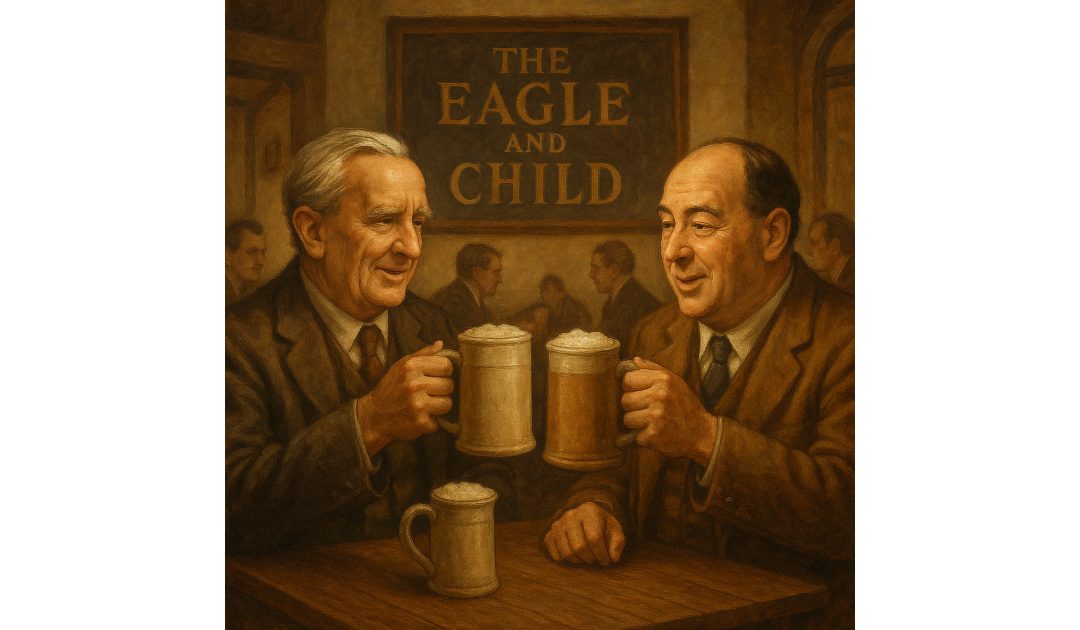On the 21st of September, 1937, J.R.R. Tolkien’s The Hobbit was published. John Ronald Reuel Tolkien, known widely as J.R.R. Tolkien, was an eminent English writer, philologist, and academic, celebrated for his timeless contributions to the world of literature. Born on the 3rd of January, 1892, in Bloemfontein, in the Orange Free State (now part of South Africa), Tolkien’s early life was marked by significant events that shaped his imagination and scholarly pursuits.
Tolkien’s father, Arthur Reuel Tolkien, managed a bank in Bloemfontein, while his mother, Mabel Suffield, introduced young Ronald and his brother Hilary to the wonders of language and literature. After Arthur’s untimely death in 1896, the family relocated to England, settling in the pastoral landscape of Sarehole, near Birmingham. The lush English countryside left an indelible mark on Tolkien’s psyche, inspiring the idyllic Shire depicted in his later works.
Tolkien was a prodigious linguist from an early age, fascinated by the structure, sound, and evolution of languages. He mastered Latin, Greek, Gothic, Finnish, Welsh, and Old Norse, among others, and even created his own languages, such as Quenya and Sindarin, which would later bring authenticity to his fictional realms.
His academic journey led him to Exeter College, Oxford, where he excelled in Classics before shifting focus to English Language and Literature. Following his graduation in 1915, Tolkien was commissioned as a second lieutenant in the British Army during World War I. The harrowing experiences of trench warfare, particularly in the Battle of the Somme, profoundly influenced his worldview and seeped into the darker aspects of his mythology.
Post-war, Tolkien pursued an academic career, contributing significantly to the field of philology. He served as a professor of Anglo-Saxon at Pembroke College and later as the Merton Professor of English Language and Literature. His scholarly work on Beowulf and medieval literature remains highly respected.
Tolkien’s literary career blossomed with the publication of The Hobbit in 1937. Originally written to entertain his children, the tale of Bilbo Baggins adventure captured the imaginations of readers of all ages. The books success prompted his publisher to request a sequel, leading to his magnum opus, The Lord of the Rings, published in three volumes between 1954 and 1955.
The Lord of the Rings is more than a mere fantasy novel; it is a richly woven tapestry of mythology, history, language, and philosophy. Set in the meticulously crafted world of Middle-earth, the story explores themes of heroism, friendship, sacrifice, and the corrupting influence of power. Tolkien’s depth of world-building, complete with its own languages, cultures, and histories, set a new standard for the fantasy genre.
While Tolkien insisted his works were not allegorical, many readers and scholars have drawn parallels to his personal experiences and the tumultuous events of the 20th century. The desolation of Mordor, for instance, echoes the ravaged landscapes of wartime Europe.
Tolkien’s influence extends beyond literature. His works have inspired countless adaptations in film, television, art, and music. Peter Jackson’s film trilogies of The Lord of the Rings and The Hobbit introduced Middle-earth to a new generation, though Tolkien himself was sceptical of film adaptations during his lifetime.
On a personal note, Tolkien was a devout Roman Catholic, which subtly influenced the moral undertones of his stories. His enduring friendship with C.S. Lewis, author of The Chronicles of Narnia, and their participation in the literary group known as the Inklings, fostered a creative environment where both authors refined their ideas.
Tolkien retired from academia in 1959, dedicating his later years to refining his legendarium, much of which was posthumously edited and published by his son, Christopher Tolkien. This includes The Silmarillion, a compendium of myths and histories that form the backbone of Middle-earth’s lore.
J.R.R. Tolkien passed away on the 2nd of September, 1973, leaving behind a literary legacy that continues to resonate globally. His grave in Wolvercote Cemetery, Oxford.

